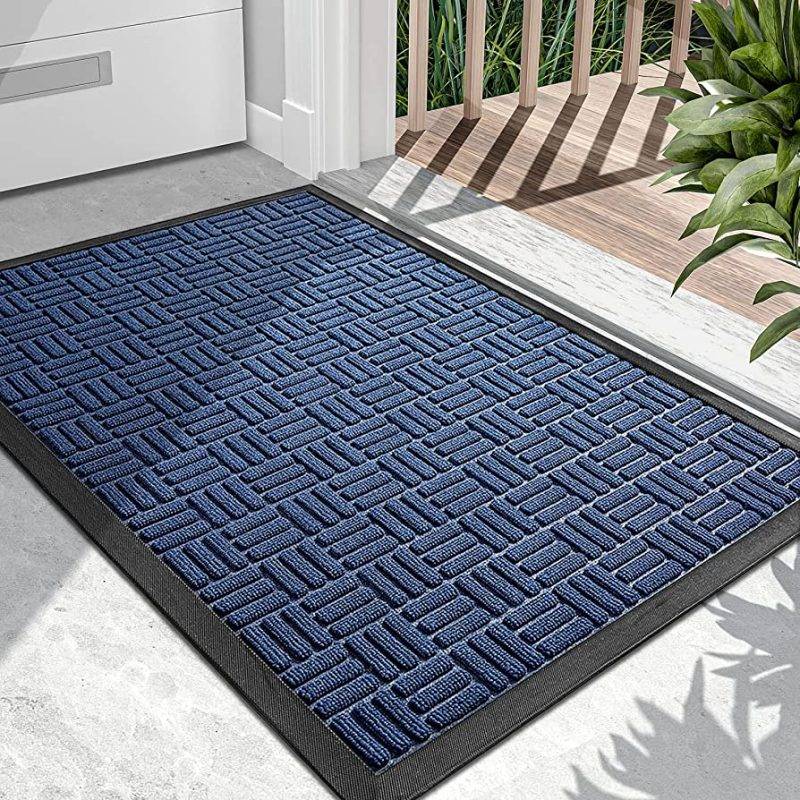How to Choose the Right Heavy Duty Ground Mats for Your Heavy Machinery

Heavy machinery like cranes, bulldozers, and excavators are essential tools in many industries, including construction, mining, and forestry. Operating such machinery on uneven or unstable ground can be risky and can cause significant damage to the equipment. To prevent this, heavy-duty ground mats are used as a foundation to provide a stable surface for the machinery to operate on. Change to Choosing the right ground mats from blugatorepro.com for your heavy machinery is essential to ensure the safety of your equipment and workers.
In this article, we will discuss the factors that you should consider when choosing the right heavy-duty ground mats for your heavy machinery.
Load Capacity
The first factor to consider when choosing heavy-duty ground mats is the load capacity that they can support. Heavy machinery can weigh several tons, and the ground mats must be able to withstand the weight of the machinery. The load capacity of a ground mat is measured in pounds per square foot (PSF). It is essential to choose ground mats with a load capacity that can support the weight of your machinery, including any additional loads such as materials or equipment. If the load capacity of the ground mat is not sufficient, it can cause the ground mat to sink or shift, leading to instability and potential damage to the machinery.
Size and Shape
The size and shape of the ground mat are also crucial factors to consider when choosing the right ground mat for your heavy machinery. The ground mat should be wide and long enough to accommodate the machinery’s tracks or wheels without overhanging the edges of the ground mat. Overhanging edges can cause the ground mat to shift, leading to instability and potential damage to the machinery. The shape of the ground mat should also be considered, depending on the terrain and the shape of the machinery. For example, if the terrain is uneven, it may be necessary to choose ground mats with a curved or beveled edge to provide a smooth transition for the machinery.
Material
The material of the ground mat is another critical factor to consider when choosing the right ground mat for your heavy machinery. Ground mats can be made from various materials, including wood, plastic, and steel. Each material has its advantages and disadvantages, depending on the application and the terrain. Wooden ground mats are commonly used in the construction industry because they are affordable and easy to transport. However, they are not suitable for use in wet conditions as they can absorb moisture and become unstable. Plastic ground mats are lightweight and durable, making them ideal for use in muddy or wet conditions. Steel ground mats are the most durable and can withstand the heaviest loads, but they are also the most expensive.
Traction
Traction is another crucial factor to consider when choosing the right ground mat for your heavy machinery. The ground mat should provide sufficient traction to prevent the machinery from slipping or sliding, especially in wet or muddy conditions. Some ground mats have a textured surface or non-slip coating to provide additional traction. It is essential to choose ground mats with sufficient traction to ensure the safety of the machinery and workers.
Portability
The portability of the ground mats is also an important factor to consider, especially if you need to transport them to different job sites. Wooden ground mats are the most portable, as they are lightweight and can be easily transported on a truck or trailer. Plastic ground mats are also portable but may require more space due to their size and shape. Steel ground mats are the least portable, as they are heavy and require specialized equipment to transport.
Cost
The cost of the ground mats is also an important factor to consider when choosing the right ground mat for your heavy machinery. The cost of the ground mats will depend on the material, size, and load capacity. Wooden ground mats are the most affordable, followed by plastic ground mats, and steel ground mats are the most expensive. It is essential to choose ground mats that are within your budget, but also provide the necessary load capacity and traction to ensure the safety of the machinery and workers.
Conclusion
Choosing the right heavy-duty ground mats for your heavy machinery is essential to ensure the safety of your equipment and workers. The load capacity, size and shape, material, traction, portability, and cost are all important factors to consider when choosing the right ground mat for your heavy machinery. By considering these factors, you can select the right ground mat for your heavy machinery, providing a stable and secure foundation for your equipment to operate on.
